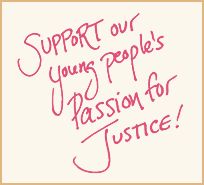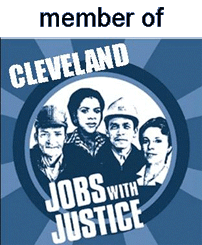Sweatshop Labor
What is a sweatshop?
It is any workplace in which workers are subject to extreme exploitation. This includes not providing workers with benefits, acceptable working conditions, or a living wage. A living enables workers to cover the cost of basic needs, such as food, shelter, and healthcare; minimum wages usually don't cover these costs. People usually think of sweatshops with workers toiling away indoors in cramped, poorly-ventilated factories in places like China and Honduras. However, some of the biggest sweatshops are outside in the fields. Severe abuses against workers take place on plantations that grow bananas, sugar, pineapples and cut flowers.
What is sweatshop labor like?
Sweatshop laborers generally work 60-80 hours per week and are not paid enough to put food on the table, sometimes receiving just pennies a day for their labor. Often, the sweatshop environment is unsafe where workers are harassed, intimidated, forced to work overtime, and made to work in dangerous and unhealthy environments, even while ill. Workers handle toxic chemical paints, solvents, and glues with their bare hands.

Why do sweatshops exist?
Sweatshops are a product of the global economy and so-called "free" trade. Companies increase profits by driving down costs any way possible, so they set up low-cost factories. To minimize costs, companies look for places with the lowest wages and human rights protections. Sweatshops can be found all over Central and South America, Asia, and certain regions of Europe. There are even undocumented workers in sweatshops in places like New York, San Francisco and Los Angeles.
What is the link between sweatshops and child labor?
Children are employed in sweatshops because they work for less money and are less likely to complain about poor working conditions. Many of the children must work to help their parents, who are not paid enough to provide for the family. An education is out of the question for these children, who must work instead of going to school.
What can you do to stop sweatshop exploitation?
- Organize Locally!
(www.sweatfree.org)
- Propose sweat-free purchasing policies to your school board, university, and local or state government.
- If you are a student join United Students Against Sweatshops, an international student movement of campuses and individuals students fighting for sweatshop-free labor conditions and workers' rights. (www.studentsagainstsweatshops.org)
- Participate in Consumer Campaigns!
(www.boycotts.org)
- Support Co-op America's Campaign boycotts. Boycotts are powerful tools for raising awareness about the impact of corporate practices on workers, communities, and the Earth.
- Use Shareholder Clout!
(www.socialinvest.org
& www.shareholderaction.org)
- If you own stock in individual companies, vote in support of any shareholder resolution that require the company to improve its labor policies.
- Investigate Companies!
(www.behindthelabel.org)
- Investigate companies' labor and environmental records. If a company lacks code of conduct of procedures for enforcing it, ask companies to establish & enforce a code of conduct.
- Buy Fair Trade!
- Check out IRTF's Shop with a Conscience: Fair Trade Buying Guide."
- Buy Union-made, Local, & Secondhand!
(www.unitehere.org/buyunion)
- For clothing and household items, shop at secondhand and consignment stores.
- When buying new clothing, look for the union lable on the clothing you buy, or make your purchases from socially responsible businesses!
- Support local food retailers such as farmers' markets so that your dollars go to the people who grow your food rather than to the middle person.
- Spread the Word & Use the Power of Collective Action!
- Encourage your community organizations, office sports teams, faith community, or alumni associations, to work to end sweatshops or advance fair trade. Make sure your group's T-shirts are made by workers earning fair wages or that your gatherings feature fair trade coffee, tea, & hot chocolate.
For more information on buying sweatshop-free check out our Sweat-free Buying Guide!
- Title background is a photograph from the Kuk Dong factory in central Mexico. Courtesy of No Sweat
- Site Attributions







